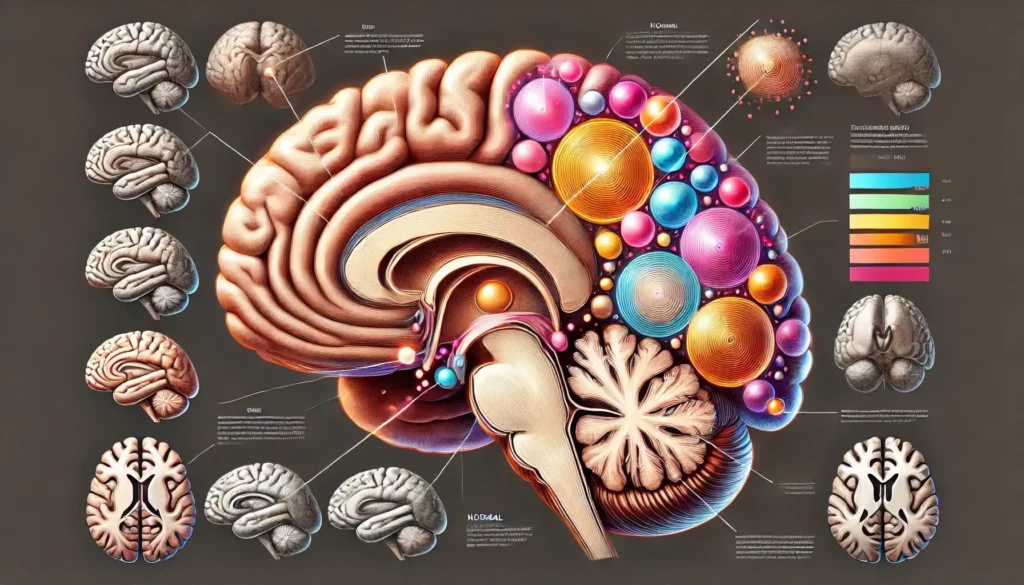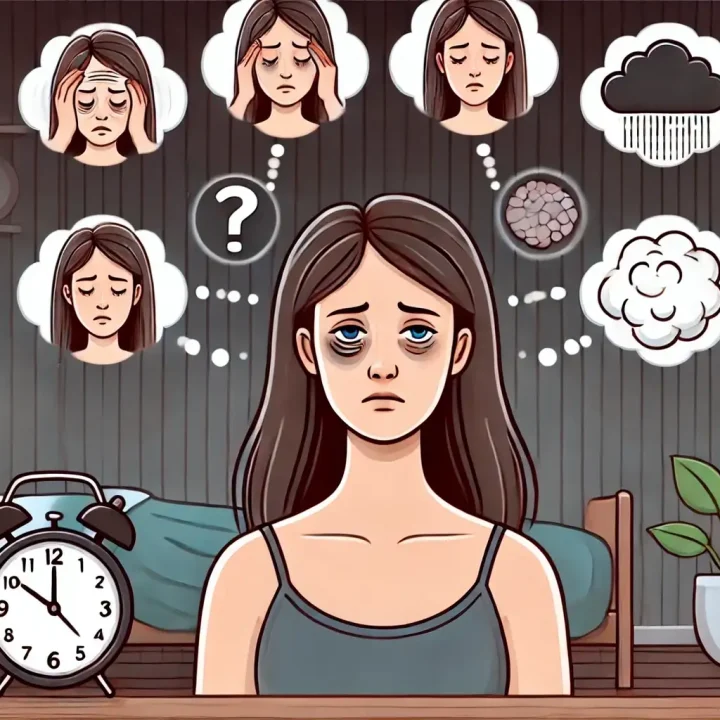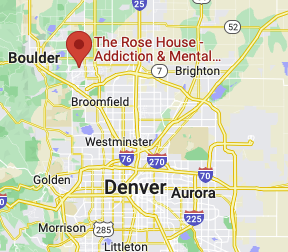Stimulant Addiction in Women
Home » What We Treat » Addictions We Treat » Stimulant Addiction in Women
Stimulant Addiction in Women
Stimulant addiction means losing control over the use of drugs like meth, cocaine or prescription stimulants like Adderall. This article outlines the signs, effects, and recovery options for women struggling with stimulant abuse.
Key Takeaways
Drug and alcohol addiction severely impacts physical, psychological, and social well-being, often leading to stimulant use disorder characterized by hindrance to daily function and distress.
Both genetic and environmental factors contribute to the development of stimulant use disorders, with risk factors including childhood exposure to substance abuse and high personal or professional demands.
Effective treatment for stimulant addiction involves a combination of inpatient and outpatient programs, behavioral therapies, and holistic approaches, with a particular need for gender-specific treatment options, as exemplified by centers like The Rose House.
Understanding Stimulant Abuse and Addiction: Signs, Effects, and Recovery Options
Stimulant addiction is characterized by a pattern of using stimulants to the extent that it hinders daily function, leading to a likely development of a stimulant use disorder. Individuals often seek stimulants for their effects of increased energy, alertness, and euphoria. However, this pursuit can quickly spiral out of control, resulting in severe physical, psychological, and social consequences.
Criteria for stimulant use disorder include using stimulants enough to negatively affect one’s life and cause distress. According to the Substance Abuse and Mental Health Services Administration (SAMHSA) in 2013, more than 1.9 million people in the U.S. suffered from stimulant use disorder. The causes of stimulant use disorder are multifaceted, involving both genetic and environmental factors.
In addition, Substance Abuse and Mental Health Services Administration (SAMHSA) in 2021 explained – prescription stimulant misuse is improper or unhealthy use of a prescription stimulant medication, including using medication without a prescription of one’s own; in greater amounts, more often, or longer than prescribed; or in a way other than prescribed.

Overview of Stimulant Abuse and Addiction

Stimulants cover a wide range of substances, some of which are legally used for specific purposes, while others are illicitly used for their effects. The effects and purposes of these substances can vary greatly. Some serve medical purposes, such as Adderall for attention deficit hyperactivity disorder (ADHD), while others are predominantly used illegally, such as cocaine and methamphetamine. These substances are classified as Schedule II drugs due to their high potential for abuse.
The 2020 National Survey on Drug Use and Health revealed the extent of stimulant misuse in the United States, highlighting the following statistics:
Stimulants like Adderall or Ritalin were accessible to two-thirds of young adults with the opportunity to abuse these prescriptions.
More than a third reported that stimulant use is a growing problem among their peers.
In 2013, more than 1.9 million people in the U.S. suffered from stimulant use disorder.
Using stimulants enough to negatively affect their lives and cause distress forms the criteria for stimulant use disorder. The sought-after effects of stimulants include increased energy, alertness, and euphoria, making them highly addictive.
If individuals abuse stimulants to the point where it affects their daily function, there is a high likelihood that they have a stimulant use disorder. This condition can have significant impacts on their daily life and overall well-being.
Women and men with substance abuse issues rarely misuse one drug. Often women tend to combine various illicit drugs and prescription drugs which ultimately lead to stimulant abuse, alcohol abuse, and opioid abuse. Abuse can lead to common co-occurring disorders meaning substance use disorders and mental health diagnosis existing simutaniously.
Commonly Abused Stimulants
Commonly misused stimulants include both illegal drugs like cocaine and methamphetamine and prescription medications like Adderall. These substances are widely abused due to their potent effects on the central nervous system, which can lead to intense cravings and addiction.
Examples of prescription stimulants that are regularly prescribed for college students and young women and men include Ritalin and Adderall. Prescription drug misuse can quickly escalate into a substance use disorder, highlighting the importance of proper medical supervision and awareness.
How Stimulants Affect the Brain and Body
Stimulants increase central nervous system activity by interacting with neurotransmitters like norepinephrine and dopamine. These chemicals play crucial roles in regulating mood, attention, and pleasure. For instance, dopamine is associated with pleasure and motivation, while norepinephrine is linked to attention and arousal.
Stimulants profoundly impact the brain, resulting in heightened levels of dopamine, norepinephrine, and serotonin. Methamphetamine use, in particular, triggers a high release of dopamine in the brain’s reward circuit, contributing to its addictive nature. This excessive release can lead to structural changes in the brain over time in both men and women.
Physiologically, stimulants can cause a range of effects, including increased heart rate, elevated blood pressure, and heightened alertness. However, chronic use can lead to severe health issues such as cardiovascular problems, strokes, and seizures. Grasping these effects is vital in identifying the stimulant abuse and pursuing immediate intervention.

Symptoms, Signs, Higher Risk

Behavioral symptoms of stimulant addiction vary from person to person and may include hyperactivity, agitation, and secretive behavior. These changes in behavior can be subtle at first but often escalate and mistaken as high anxiety or antisocial personality disorder as the addiction progresses. Recognizing stimulant abuse signs early can be pivotal in seeking help.
Cognitive symptoms of stimulant addiction include impaired judgment, confusion, and hallucinations. Individuals may struggle with decision-making and experience distorted perceptions of reality. These cognitive impairments can significantly impact daily life and personal relationships.
Physical symptoms of stimulant addiction are also telling. Increased heart rate, elevated blood pressure, and dilated pupils are common indicators. These physical changes, coupled with behavioral and cognitive symptoms, provide a comprehensive picture of stimulant addiction signs, helping loved ones identify the need for intervention.
Risk Factors for Developing Addiction to Stimulants
Genetic markers identified in genomic studies are associated with the regulation of dopamine signaling, which plays a central role in addiction risk. Specific single-nucleotide polymorphisms (SNPs) are linked to general and substance-specific addiction risks. These genetic factors can predispose individuals to substance use disorders.
Environmental factors that significantly contribute to the risk of developing stimulant addiction include:
Growing up in a home environment where substance abuse is common
Experiencing high expectations or extreme work demands
Having a history of abuse
Prenatal exposure to substances
Community violence

These factors can increase susceptibility to addiction.
The combination of genetic predisposition and environmental influences creates a complex landscape for developing stimulant use disorder. People with undiagnosed mental illness or other mental health conditions may self-medicate using drugs or alcohol, exacerbating their conditions over time. Identification of these risk factors can assist in initiating prevention and early intervention strategies.
Short-term and Long-term Effects of Stimulant Abuse

Short-term effects of stimulant abuse can include:
Increased wakefulness
Physical activity
Decreased appetite
Increased attention
Decreased fatigue
These effects are often sought after by users but come at a significant cost.
However, the long-term consequences of stimulant abuse are far more severe. Chronic use can lead to:
Cardiovascular problems such as rapid heart rate, irregular heartbeat, and increased blood pressure
Structural changes in the brain
Impaired cognitive functions, including memory and decision-making skills
These effects highlight the importance of avoiding stimulant abuse, including alcohol abuse and drug abuse, and seeking help if you or someone you know is struggling with drug addiction.
In women, physiological effects can include abnormalities in gastrointestinal, neuromuscular, and cardiac systems, as well as changes and difficulties with the menstrual cycle. The variety of negative consequences highlights the urgent need for effective substance abuse treatment to mitigate these risks and support recovery.
Stimulant Withdrawal Symptoms and Management
Stimulant withdrawal can be an uncomfortable period characterized by various signs and effects. Common symptoms of the condition may include:
Fatigue
Anxiety
Paranoia
Drug cravings
Temporary severe depression
These symptoms can have a significant impact on a person’s daily life. These symptoms can be debilitating and require careful management to ensure a successful recovery.

Gradually tapering off stimulants can help mitigate the severity of withdrawal symptoms. Monitoring for depression and suicidal thoughts is crucial during this period. Providing hydration and nutrition support can also play a significant role in managing withdrawal symptoms.
Physical activity can alleviate some withdrawal symptoms by promoting the release of endorphins, which help improve mood and reduce stress. Detoxification for stimulant addiction may involve medical support to manage withdrawal symptoms and reduce the risk of relapse. A structured and supportive environment is essential for navigating this challenging phase.
Co-Occurring Disorders and Substance Use Disorder
Substance abuse and mental health disorders often co-occur, with both conditions having symptoms that interfere with daily functioning. Mental health issues and substance abuse problems can exacerbate each other if left untreated. About 50% of individuals with severe mental disorders are also affected by substance abuse.
Common co-occurring mental health problems with substance abuse include depression, bipolar disorder, anxiety disorders, schizophrenia, and PTSD. Individuals who use or abuse stimulants often struggle with other mental health disorders such as anxiety disorders, bipolar disorder, and antisocial personality disorder.
Effective treatment for co-occurring disorders addresses both the mental health disorder and substance abuse issue simultaneously. Integrated treatment approaches are essential for achieving long-term recovery and improving overall well-being.
Behavioral Therapies
Behavioral therapies for stimulant abuse and addiction can include individual therapy and group therapy, aiming to change patterns of thinking and behavior related to substance use. Cognitive Behavioral Therapy (CBT) helps patients identify and change negative thought patterns related to stimulant use. Contingency Management uses a system of incentives to promote abstinence from stimulant use.
Motivational Interviewing is designed to help patients find internal motivation to change their stimulant use behavior. These therapies equip individuals with valuable tools to comprehend and alter their behavior, thus fostering long-term recovery.
Gender Differences in Stimulant Addiction
Biological and sociological differences between men and women significantly affect stimulant addiction and treatment outcomes. Women often have a quicker progression from first using a substance to developing dependence than men. This rapid progression can be attributed to various factors, including differences in body composition and hormonal fluctuations.
Women tend to experience more intense cravings during both early and late recovery compared to their male counterparts. Additionally, women are more prone to experiencing intense highs or hallucinations when using certain drugs like ecstasy but also face a higher risk of depression post-use. These biological and emotional responses necessitate gender-specific treatment approaches.
Studies have indicated that women are more inclined to begin and successfully finish meth addiction treatment compared to men. This research highlights a potential gender difference in treatment outcomes. However, they also face unique challenges, such as managing work, home care, and childcare responsibilities while undergoing treatment. Catering to these specific needs is a vital determinant of successful recovery.
The Rose House: A Safe Place for Women
The Rose House is a women-only treatment center located in Lafayette, CO, outside of Boulder. It specializes in treating addiction in women, providing a safe environment for recovery. The mission of The Rose House is to offer evidence-based, integrative treatment within a dynamic community of recovery.
Women travel from all over the United States to receive treatment at The Rose House, highlighting its national reach and accessibility. The center focuses on promoting emotional healing and sustained sobriety through a comprehensive care approach tailored to women’s unique needs.
Addressing Underlying Trauma
The Rose House places a significant emphasis on addressing underlying trauma as part of the treatment process. Women are more likely to self-medicate for traumatic experiences such as domestic violence or sexual assault. By using trauma-focused approaches, The Rose House aims to address the root causes of mental health and substance abuse issues in women.
Clients at The Rose House explore how different types of trauma have impacted their lives and those of their loved ones. This holistic approach to healing helps women understand and overcome the underlying issues contributing to their addiction.
Comprehensive Care Approach
The Rose House provides a customizable menu of services to address the specific needs of each client. This comprehensive care approach focuses on promoting:
- Psychological healing
- Emotional healing
- Physical healing
- Spiritual healing
- Cognitive healing
The center offers extended care addiction and mental health treatment, distinguishing itself from many traditional programs by addressing mental health disorders alongside substance use disorder. The leadership team at The Rose House is involved in day-to-day operations, ensuring a personal and dedicated approach to treatment, supported by the mental health services administration.
Summary
Addiction is a complex and multifaceted issue that requires a comprehensive approach to treatment. From understanding the signs and effects of addiction to exploring various recovery options, this blog post has provided insights into the challenges and solutions for overcoming stimulant use disorder. Recognizing the unique challenges faced by women and the importance of gender-specific treatment is crucial for effective recovery.
The Rose House stands out as a leader for women suffering from stimulant addiction, offering a safe and supportive environment for healing. By addressing underlying trauma and employing a comprehensive care approach, The Rose House exemplifies the best practices in addiction treatment. Together, with the support of family and friends, individuals can embark on the path to recovery and reclaim their lives from addiction.
Frequently Asked Questions
Common signs of stimulant addiction include hyperactivity, agitation, secretive behavior, impaired judgment, confusion, hallucinations, increased heart rate, elevated blood pressure, and dilated pupils.
Risk factors for developing stimulant addiction include genetic predisposition, growing up in a home environment where substance abuse is common, experiencing high expectations or extreme work demands, having a history of abuse, prenatal exposure to substances, and community violence.
Stimulants increase central nervous system activity by interacting with neurotransmitters like norepinephrine and dopamine, resulting in heightened levels of these chemicals. Physiologically, stimulants can cause increased heart rate, elevated blood pressure, and heightened alertness, while chronic use can lead to severe health issues such as cardiovascular problems, strokes, and seizures.
Short-term effects of stimulant abuse include increased wakefulness, physical activity, decreased appetite, increased attention, and decreased fatigue. Long-term effects can include cardiovascular problems, structural changes in the brain, and impaired cognitive functions, including memory and decision-making skills.
Symptoms of stimulant withdrawal can include fatigue, anxiety, paranoia, drug cravings, and temporary severe depression. These symptoms can be debilitating and require careful management to ensure a successful recovery.
The Rose House provides extended care addiction and mental health treatment for women, focusing on addressing underlying trauma and promoting holistic healing. The center offers a comprehensive care approach, including psychological, emotional, physical, spiritual, and cognitive healing.


